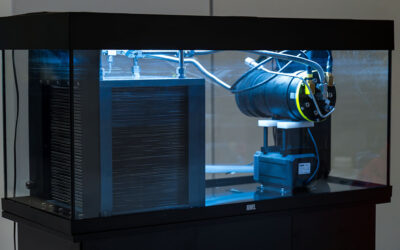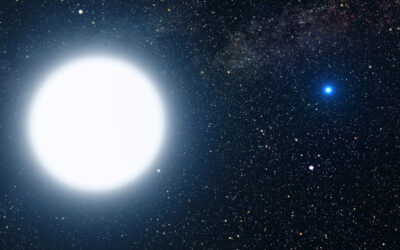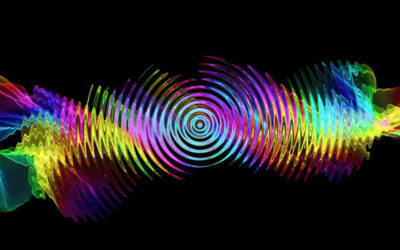Researchers have developed a novel electricity generator that draws power from water evaporating into the air. Unlike conventional hydrovoltaic systems that rely on mechanical intermediaries, the new device harnesses evaporation directly to produce usable electricity. The team’s invention — described as ‘evapolectrics’ — could pave the way for sustainable, battery-free electronics powered by ambient moisture.
“Hydrovoltaics is a way to make electricity from water, specifically by tapping into the energy released when there is humidity change, evaporation, or when water moves around,” Professor Ady Suwardi of The Chinese University of Hong Kong and one of the lead authors of the study, said in an email. “It is an abundant and plentiful source of energy, with no sunlight or big machinery needed!”
While the idea of generating electricity from water has been around for some time, current methods often suffer from low efficiency due to energy losses in the conversion process.
“So far the power generated from hydrovoltaics is relatively low,” Suwardi explained. “This is due to the indirect conversion of energy. For example, energy from water movement or evaporation is usually first converted into mechanical energy, and then into electricity. This results in inefficiencies.”
The team sought to eliminate those inefficiencies by designing a system that bypasses the mechanical step altogether. Their solution: an “evapolectrics generator” that uses nothing more than a soft water-retaining gel and a thermoelectric component.
Evaporation meets thermoelectricity
At the heart of the device reported in a study published in Advanced Functional Materials, is a porous polyvinyl alcohol (PVA) hydrogel — essentially a spongy, water-loving material that absorbs and releases moisture steadily over time.
“PVA hydrogel is a squishy, water-soaking material made from polyvinyl alcohol,” Suwardi said. “It holds water really well, like a super-absorbent kitchen sponge or diaper.”
When water evaporates from the hydrogel’s surface, it cools the gel — much like how sweat cools the skin. This creates a small but steady temperature difference between the cooled gel and a warmer base layer. Sandwiched between them is a thermoelectric generator, which converts the temperature difference into electrical voltage.
“Our evapolectrics generator is built like a neat little stack,” Suwardi said. “At the top is a thin layer of PVA hydrogel, shaped to a small square and just a fraction of a centimeter thick in the most effective version. Beneath that lies a thermoelectric generator, and below it, a heat sink that helps maintain a temperature close to the surrounding air. The hydrogel sits on the thermoelectric generator, soaking up water and letting it evaporate naturally.”
“The electricity power the device generated was more than three times higher than traditional hydrovoltaic systems,” added Jing Cao of the National University of Singapore, who co-authored the study. “Furthermore, this was achieved under realistic ambient conditions — 26 degrees Celsius, 40% humidity, and a light breeze comparable to a slow walking speed.”
Practical power for small devices
Despite its modest output, the system is already powerful enough to operate basic electronics. In experiments, the team successfully used the device to run a small liquid-crystal display. “The power was enough to run a small LCD display, showing it is sufficient to power low-power gadgets,” Cao said.
One key to the device’s success lies in the thickness of the hydrogel layer. Thinner sheets — about 0.8 millimeters — transferred cooling more effectively to the thermoelectric generator, boosting electrical output. Thicker layers retained more water but acted as insulators, reducing the temperature gradient and, with it, the voltage produced.
According to the researchers, improving the materials further could dramatically enhance performance. “Our preliminary results hint that improving the thermoelectric generator and hydrogel design could further boost power by three to five times, or even ten times,” Cao said.
Toward real-world applications
Although the study is still at a relatively early stage, the team sees strong potential for commercial applications within the next few years. “With good technology transfer, it might take three to five years to go from lab to store shelves,” Cao said.
One of the most promising areas is wearable technology. Devices like fitness trackers and environmental sensors could one day run continuously on moisture from the air — or even directly from perspiration. “Imagine tiny sensors or wearable health trackers, like a fitness band, that run off the moisture in the air or your sweat, no batteries needed!” Cao suggested.
Looking ahead, the researchers hope to refine their design further. Possible improvements include more efficient thermoelectric modules, better heat sinks, and tweaks to the gel’s surface to speed up evaporation. “We could improve the hydrogel–generator connection to reduce heat loss, aiming for that 25 watts per square meter dream,” said Cao.
The study also found that variations in PVA concentration had little impact on performance, opening the door to cost-effective and durable gel formulations. That flexibility could prove crucial for scaling up the technology.
“In the early days of solar panels, efficiency was only around 6%, and now it’s above 30%,” Cao said. “With good technological adoption and sustained work from the research community, we could see a similar leap, maybe even more. This will help open doors to a world of battery-free, water-powered tech.”
Reference: Zichen Gong, Ady Suwardi, and Jing Cao, Electricity Generation From Ambient Water Evaporation in the Absence of Sunlight via PVA-Based Porous Hydrogels, Advanced Functional Materials (2025). DOI: 10.1002/adfm.202423371
Feature image credit: WalterBieck on Pixabay

















